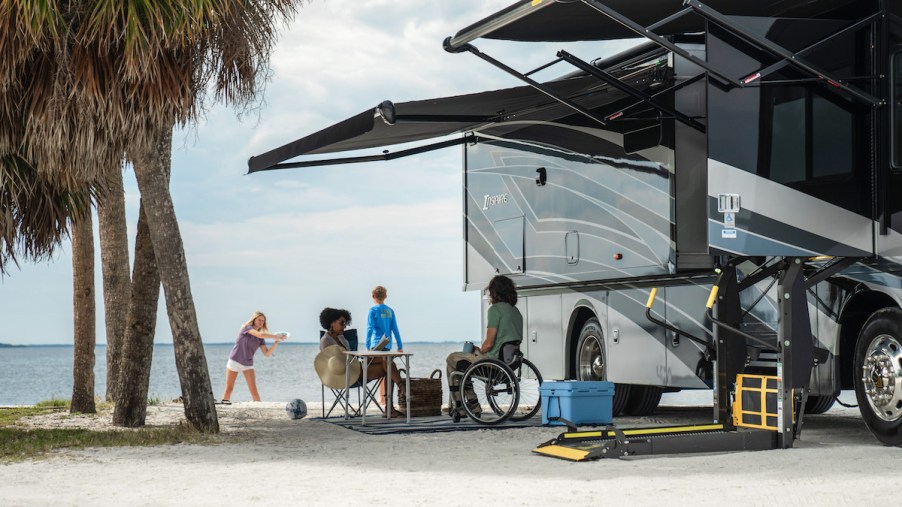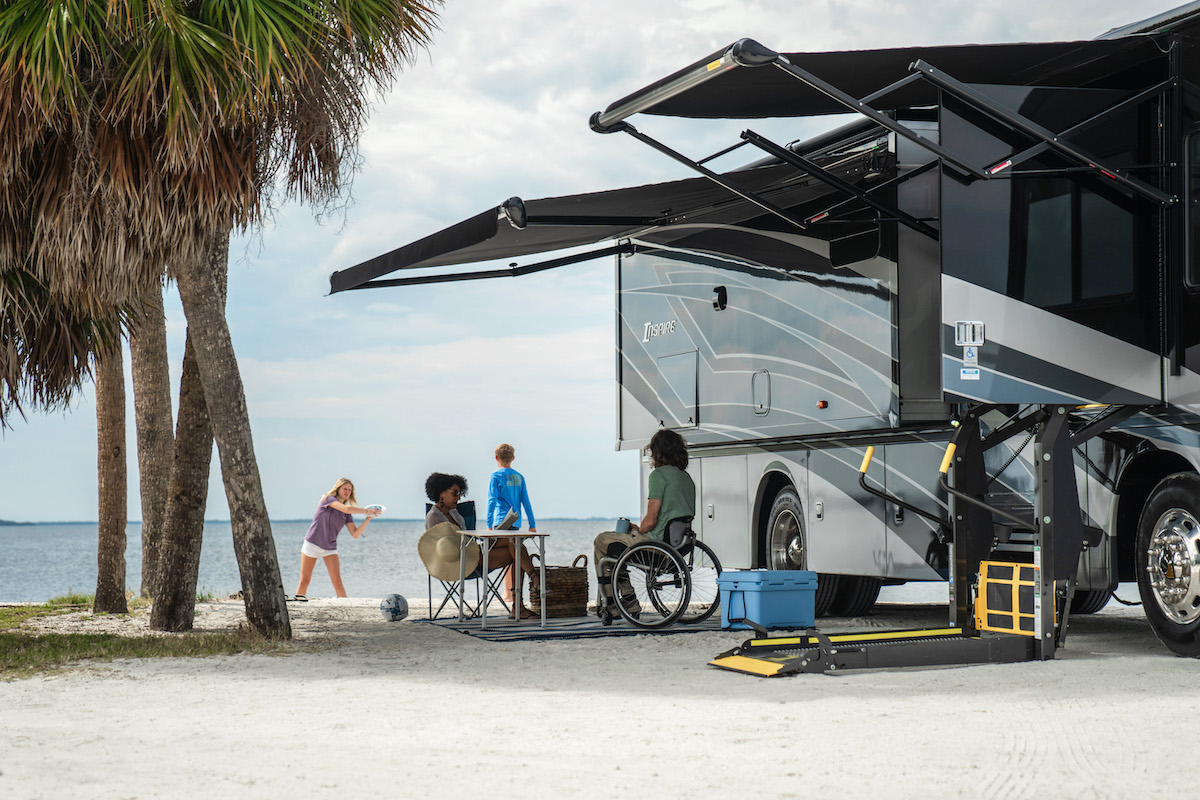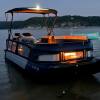
How to Make Your RV Accessible for Wheelchair Users and Others With Disabilities
Traveling in an RV is an excellent way to vacation without worrying about hotel costs. Large rigs and even camper vans are notoriously terrible on gas, but you can save money by staying at an RV park. Many motorhomes also boast luxurious amenities to make long-term stays comfortable. However, most RVs don’t accommodate riders with disabilities. Here are a few ways RV drivers (and RV park owners) can add accessibility options for wheelchair users and others with physical disabilities.
Accessibility options for RVs

Ramps and lifts
Wheelchair users can benefit from a ramp or lift installed on an RV. Ramps are usually the cheapest option, with wider models retailing for around $550 on Amazon. However, ramps with guard rails and higher weight capacities can cost over $1,000, Lynx explains.
Wheelchair lifts are even more expensive, and you might need to hire a professional to install one safely. Additionally, you must measure the entryway to ensure the lift will fit. Despite the extra planning, a lift requires less strenuous effort from the wheelchair user than a ramp.
Hand controls and rotating seats for RV drivers
It’s also possible to add accessibility features for RV drivers. Hand controls can allow for the safe operation of the rig’s foot pedals, and rotating seats offer better mobility.
Lynx tells us that many RVs only have one hand bar, but you can add more for relatively minimal costs. These are commonly installed in the RV’s sleeping and restroom areas. As with a house, you can also integrate handrails and benches into an RV’s shower area.
Roll-in showers
If your RV is wide enough, it can likely accommodate a roll-in shower for wheelchair users. Larger rigs are more easily modified with wheelchair-accessible floorplans. By reconfiguring fixtures and furniture, you can create wider wheelchair paths.
Lowered controls throughout the RV
Regardless of your RV’s size, people with limited mobility might greatly appreciate lowered controls. They allow wheelchair users to access light switches and use kitchen equipment easily.
Making RV parks more accessible
CurbFree With Cory Lee points out that many wheelchair users don’t want to risk damaging their expensive mobility equipment on rocky terrain. RV campground owners can ease those concerns by providing wheelchair rentals.
That would also give peace of mind to people with chronic pain or mobility issues needing wheelchairs occasionally. Camping trips usually involve lots of physical activity that can trigger pain flare-ups in many individuals.
In addition, rental ramps and other on-site equipment can help differently abled individuals exit and enter RVs.
Furthermore, an accessible RV park might include concrete paths for wheelchairs.
An important note about RV accessibility modifications
Remember that accessibility features such as ramps and lifts aren’t universal. Wheelchairs come in varying dimensions, so not everyone can use the same accessibility platform. Likewise, some people might lack the upper body function to use handrails.
In some cases, the RV’s manufacturer might work with you to install unique accessibility features on your vehicle. A custom-built wheelchair lift can be the most convenient option for some RV adventurers.
NewMobility reports that Canyon Star can deliver made-to-be-accessible RVs. The first was a 3911 model with a wheelchair-friendly dining area, roll-in shower, and lowered control switches throughout the vehicle.
And Winnebago makes a few accessibility-enhanced (AE) models, including the Inspire AE, Adventurer AE, and Roam camper van.
As demand for accessibility grows, more RV makers might advertise such features directly.


